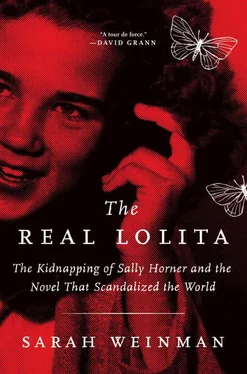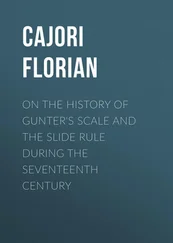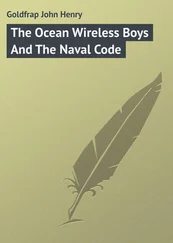Lastly, Welding theorized, with the careful, awkwardly worded hedge, that “it is not unlikely to suppose” that Nabokov did not begin to work on Lolita “until 1950, under the stimulus of the stories of the LaSalle-Horner case. All evidence, in fact, would seem to support this position.” This is false, since Nabokov’s own December 1953 diary entry, celebrating the completion of the manuscript after five years of work, refutes Welding. We also know this supposition is false thanks to the existence of The Enchanter .
However, 1950 was around the time Nabokov came close to junking what was still then called The Kingdom by the Sea . Welding was off base but his suppositions make sense: whenever Nabokov first learned of what happened to Sally Horner, that knowledge helped him to transform a partial manuscript primed for failure into the eventual, unlikely, staggering success of Lolita . If such knowledge was publicized, it would not look good for Nabokov—rightly or wrongly—to be seen as pilfering from a real girl’s plight for his fictional masterpiece.
THE NOVEMBER 1963 ISSUE of Nugget came and went without much notice. It attracted nowhere near the attention of the release of the film version of Lolita a month later, or the millions of sales garnered by the novel to date. But one person did pay attention: a New York Post reporter named Alan Levin.
Levin eventually became an award-winning documentary filmmaker, working with his son, Marc, and with Bill Moyers, on films shown by PBS and HBO. But he cut his journalistic teeth for the Associated Press and then joined the Post in the late 1950s, where his reporting on organized crime garnered him a Pulitzer Prize nomination.
It’s not clear whether Levin, thirty-seven at the time, found an advance copy of the November issue of Nugget on his own or if someone tipped him off. However he got ahold of Welding’s story, Levin knew there was one of his own to write—could it be true that Lolita owed its plot to a sensational kidnapping? And if it was true, what would the great Vladimir Nabokov have to say on the matter?
Levin posted a letter to Nabokov on September 9, 1963, which arrived in Montreux, Switzerland, just four days later. The official Nabokov response, written and signed by Véra, reached Levin soon thereafter. Levin’s story for the Post —“Nabokov Says ‘Lolita’ Is More Art Than Life”—ran on September 18, 1963, a day after Levin received Véra’s letter.
The article began with a provocative lede: “Is it possible that Humbert Humbert was a 50-year-old Philadelphia auto mechanic and his nymphet, Lolita, an 11-year-old from Camden, NJ?” Levin quoted just enough of Véra’s letter to make the Nabokov case plain, and enough of Welding’s Nugget piece to answer the question. But it’s helpful to read Véra’s letter to Levin in full, as it offers a fascinating window into her (and Nabokov’s) thought process. Her response also carries an air of protesting too much:
Montreux, September 13, 1963
Palace Hotel
Dear Mr. Levin,
My husband asks me to thank you for your letter of September 9. He has not seen the article in Nugget, which makes it difficult for him to answer your letter. At the time he was writing LOLITA he studied a considerable number of case histories (“real” stories) many of which have more affinities with the LOLITA plot than the one mentioned by Mr. Welding. The latter is mentioned also in the book LOLITA. It did not inspire the book. My husband wonders what importance could possibly be attached to the existence in “real” life of “actual rape abductions” when explaining the existence of an “invented” book. He is particularly curious as regards the meaning of Mr. Welding’s statement about “a shrewd maneuver to provide himself legal protection.” Legal protection against what?
Had he read Mr. Welding’s article, my husband might have been able to give you more pertinent comment although he fails to see what importance that article could possibly have.
Sincerely yours, (Mrs. Vladimir Nabokov)
Véra’s letter showcases the many roles she played as “Mrs. Vladimir Nabokov”: defender of her husband, curator of a singular line of vision about Nabokov’s work that put his creative genius above everything else, and master obfuscator when presented with anything that dented the Nabokov myth. Véra, again, showed herself to be the consummate brand manager for Vladimir. Any speculation that Lolita could be inspired by a real-life case went against the single-minded Nabokovian belief that art supersedes influence, and so influence must be brushed off.
How the Nabokovs handled Levin’s letter, and by extension Welding’s article for Nugget, is a window into their maddening, contradictory behavior when anyone probed Lolita ’s possible influences. They denied the importance of Sally Horner but acknowledged the parenthetical. They mentioned a “considerable number” of case histories, but only Sally’s is described in the novel.
Véra’s stubborn insistence that the Sally Horner story “did not inspire the book” is akin to trying to drown out a troublesome argument with the braying of one’s own voice. Though it worked, since Levin did not push back—at least, not that we know of.
That Véra claimed the Nabokovs had not seen the Nugget piece is odd on several counts. First, the author’s main archive at the New York Public Library contains over half a dozen boxes’ worth of newspaper clippings about Lolita, starting from its original 1955 publication by Olympia Press through its American publication by Putnam in 1958, well into the 1960s and early 1970s. The Nabokovs subscribed to several clipping services based in New York and Paris. They seemed to have kept every review in every possible language they spoke or read—English, French, German, Italian, Russian—whether good or bad, critical or full of praise, defending its content or wishing the book banned from the earth.
There is also an entire box of clippings related to the Lolita film, beginning with who would be cast to play Dolores Haze. The Nabokovs even kept a copy of the August 1960 issue of Cosmopolitan, featuring Zsa Zsa Gabor, at the ripe old age of forty-three, dressed up as twelve-year-old Lolita in a straining baby-doll nightgown, an apple in her hands, licking her lips in equal parts faux-innocence and come-hither enticement. And other fashion and girlie mags from France and Italy, each with photo shoots of starlets garbed in Lolita-like frocks as a pictorial audition for a film part they desperately wanted to play.
It staggered me, this voluminous collection of Lolita ephemera. And yet, there was no sign of the relevant issue of Nugget . Compared to other periodicals collected and kept by the Nabokovs, Nugget was not so obscure. Its absence is telling because it is part of a larger absence in Nabokov’s archives: any reference whatsoever to Sally Horner.
Véra Nabokov, in her letter to Al Levin, emphasized that Sally’s abduction “did not inspire the book.” Moreover, she insisted Nabokov “studied a considerable number of case histories… many of which have more affinities with the Lolita plot than the one mentioned by Mr. Welding.” Even if that was true, the statement was disingenuous. For only two of the “considerable number of case histories” were explicitly mentioned in Lolita: the story of G. Edward Grammer, and the story of Sally Horner.
Nabokov must have had a reason to hold on to those two index cards and not burn them, as he had burned handwritten pages of the manuscript. He had been compelled to write notes on both cases, and in particular the death of Sally Horner. He included the parenthetical reference in the novel when he could have left out any mention altogether. Sally’s story mattered to Nabokov because Lolita would not have been finished if he hadn’t read of Sally’s kidnapping.
Читать дальше












